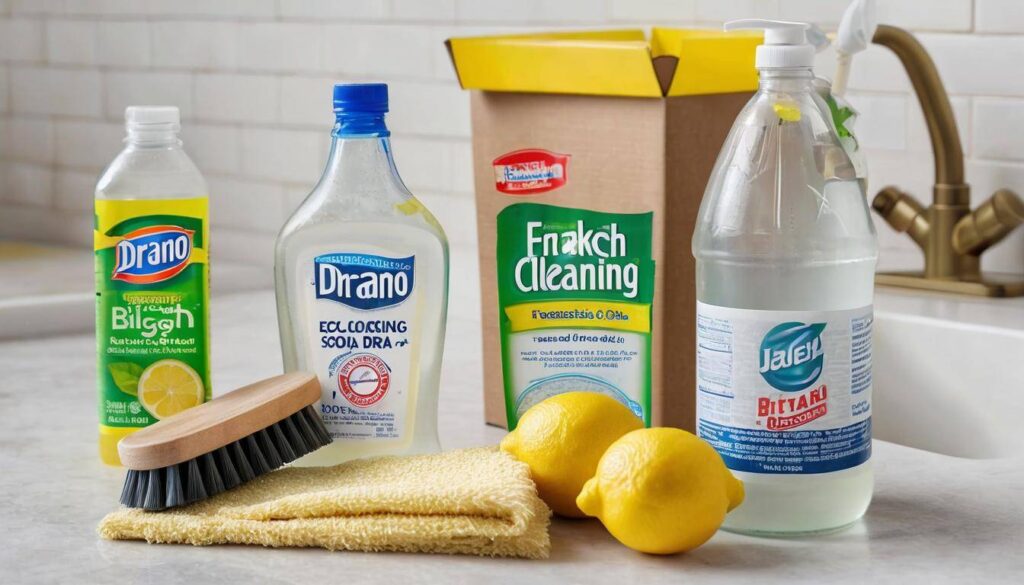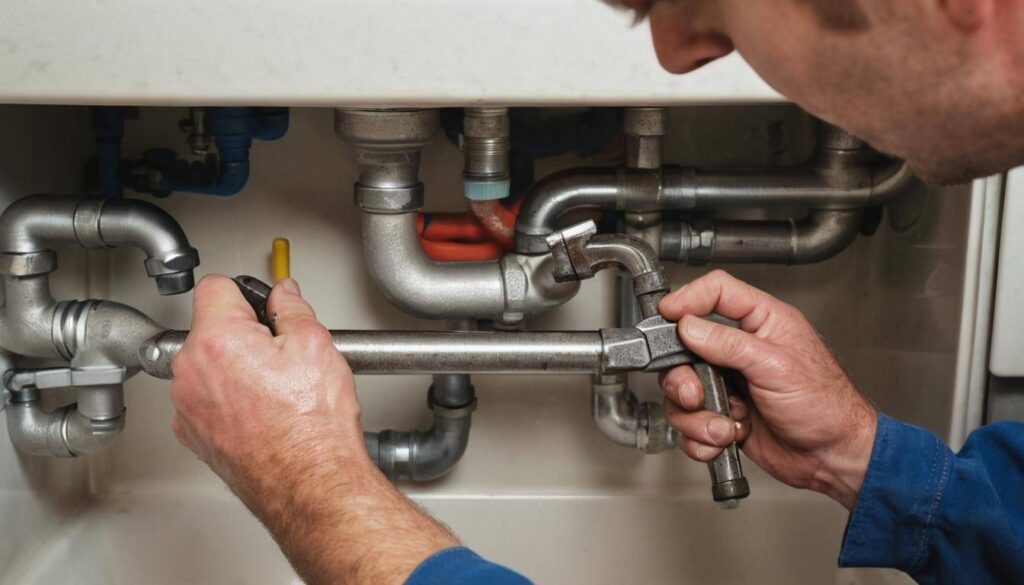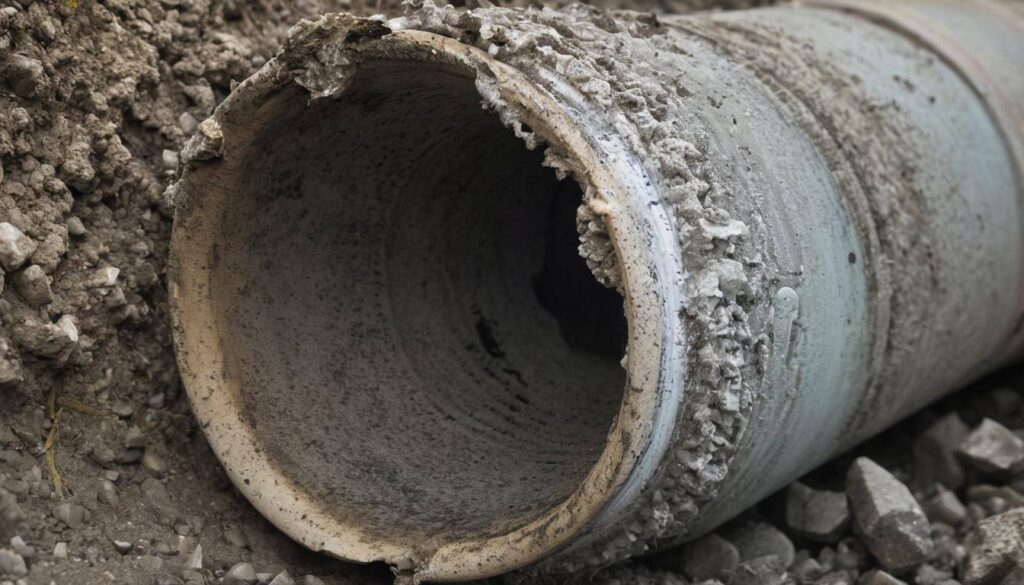How Calgary’s Climate Affects Plumbing: Understanding the Impact of Weather and Temperature
Calgary’s ever-changing climate plays a significant role in shaping how the city’s plumbing systems function. Cold winters test the durability of pipes, often leading to freezing, while the seasonal shifts further strain the infrastructure. Unexpectedly, these same climatic features provide an opportunity for plumbing services to innovate and adapt, offering resilient solutions that withstand Calgary’s unique weather patterns. Now, understanding these impacts becomes crucial.
Calgary’s cold winters can lead to frozen pipes, while the dry climate may result in an increased risk of mineral buildup and corrosion in plumbing fixtures. It is important for homeowners to take preventative measures such as insulating pipes and scheduling regular maintenance to mitigate these effects.
Calgary’s Climate and Its Effect on Plumbing
Calgary is renowned for its extreme weather conditions. Winter temperatures often plummet below freezing, while summers bring warm, sunny days, leading to significant temperature fluctuations throughout the year. These extreme shifts in temperature can directly impact your plumbing system, especially the exposed pipes running through unheated areas of your home.
When water freezes, it expands, exerting immense pressure on the pipe walls. Over time, this pressure can result in cracked or burst pipes, causing substantial water damage to your property.
Freezing Pipes
During freezing temperatures, unprotected pipes are vulnerable to freezing, potentially resulting in hefty repair bills and water damage. It’s essential for homeowners in Calgary to take preventive measures to safeguard their plumbing during the winter months.
One way to prevent frozen pipes is by insulating them with foam tubes designed for this purpose. This insulation acts as a cozy winter coat for your pipes, shielding them from extreme temperatures. Additionally, allowing faucets to drip during extremely cold weather helps prevent freezing and reduces the likelihood of a pipe burst.
Being mindful of leaks and promptly addressing them is crucial in preventing frozen pipes. Escaping water from a leaky pipe can freeze and heighten the risk of blockage, leading to potential damage.
Temperature Fluctuations
Calgary’s climate is characterized by rapid temperature changes. Winter temperatures can plummet below zero, while summers bring warmth that can cause expansion and contraction in piping materials. These fluctuations may lead to stress within the plumbing system over time.
Pipes expand when heated and contract when cooled. The repeated expansion and contraction due to fluctuating temperatures can weaken joints and fittings in plumbing systems. This stress can contribute to leaks and damage if left unaddressed. Regular inspections by a professional plumber are essential for identifying any signs of wear or stress within the plumbing system due to temperature fluctuations.
Understanding these weather-related challenges is crucial for maintaining a reliable plumbing system in Calgary. By taking proactive steps to protect against freezing pipes and address the impacts of temperature fluctuations, homeowners can safeguard their properties from potential plumbing issues down the line.
As we’ve seen how Calgary’s climate affects plumbing, now let’s examine how different weather patterns can further impact the integrity of your home’s plumbing system.
How Different Weather Patterns Impact Plumbing
Calgary experiences a wide range of weather patterns, from freezing cold winters to heavy rainfall in the summer. These diverse weather conditions pose specific challenges for plumbing systems that require careful consideration and proactive measures.
Freezing Temperatures
Throughout the winter months, freezing temperatures can wreak havoc on plumbing systems. When water inside pipes freezes, it expands, which can lead to pipes bursting and subsequent water damage. In Calgary, this expansion of frozen water inside pipes often occurs overnight or during extended periods of cold weather. To prevent this from happening, insulating exposed pipes and keeping indoor temperatures consistent can help reduce the risk of frozen pipes.
Imagine waking up one frosty morning only to find that a burst pipe has flooded your basement. The repair costs and inconvenience of such an incident are things that nobody wants to deal with.
Snow and Ice
Snow accumulation and ice can also create substantial problems for plumbing systems. When vents and drains become blocked due to snow and ice buildup, it can result in potential water backup issues. This means that important ventilation pathways get clogged, preventing the proper flow of air or water through drainage systems. If left unchecked, this can result in extensive water damage and unsanitary living conditions.
Heavy Rainfall
During periods of intense rainfall, Calgary’s drainage systems can become overwhelmed. The sheer volume of water can exceed the system’s capacity, leading to flooding and sewer backups.
Think of it like a traffic jam during rush hour; when too many cars try to use the same road at once, everything comes to a grinding halt. Similarly, heavy rainfall can overload drainage systems, causing them to fail and resulting in excess water pooling in undesirable locations.
Understanding how different weather patterns can impact your plumbing system is vital for taking proactive measures to prevent costly damage and disruptions. By staying aware of these potential issues, homeowners can take steps to safeguard their plumbing systems against the challenges posed by Calgary’s ever-changing climate.
Now that we’ve explored the significant impact of Calgary’s climate on plumbing systems, it’s crucial to delve into the specific implications for pipe materials and fittings.
Impact of Temperature on Pipe Materials and Fittings
Understanding how the materials used for plumbing respond to temperature changes is crucial for homeowners. We’ll begin by examining PVC and PEX pipes. In extreme cold temperatures, these pipes have a distinct advantage over other pipe materials. They are designed to be less susceptible to freezing, making them highly resilient. Their flexibility reduces the risk of bursting, giving them a significant edge in areas with harsh winters.
The flexible nature of these pipes is particularly important because it allows them to expand slightly as water freezes inside without breaking or cracking. This flexibility helps prevent costly damage and water leaks, providing homeowners with peace of mind during freezing conditions.
On the other hand, while copper pipes are durable and commonly used in plumbing, they can be more vulnerable to freezing and expansion during temperature fluctuations.
When temperatures drop significantly, copper pipes are at risk of freezing, which can lead to potential cracks and leaks. Homeowners need to be aware of this susceptibility when considering their plumbing infrastructure.
To put it into perspective, imagine the water inside the pipes turning into ice due to extreme cold. As the water expands, it exerts pressure on the walls of the copper pipes, which can result in fractures or even bursts in severe cases.
While copper pipes have been an industry standard for many years due to their durability and longevity, understanding their limitations in cold climates is essential for effective maintenance and preventing potential damage during winter.
It’s clear that different pipe materials and fittings respond differently to temperature changes. By understanding these behaviors, homeowners can make informed decisions about their plumbing systems and take proactive measures to protect their homes from adverse weather effects.
Understanding the impact of climate on plumbing materials sets the stage for exploring effective strategies for preventing moisture and corrosion within your home’s plumbing system.
Methods to Prevent Moisture and Corrosion
Moisture and corrosion can be a homeowner’s nightmare when it comes to their plumbing system. Not only do they lead to potential leaks, but they can also cause long-term damage if left unchecked. Here are some effective methods to prevent moisture and corrosion in your plumbing system.
Proper Ventilation
One of the key ways to prevent moisture buildup, which in turn reduces the risk of corrosion and mold growth, is by ensuring proper ventilation in areas with high humidity. Areas such as bathrooms, basements, and kitchens are especially prone to high humidity due to increased water usage.
Installing exhaust fans in these areas or opening windows after showering or cooking can help remove the excess moisture that could potentially lead to corrosion. By keeping the air circulating, you decrease the chances of moist conditions conducive to corrosion and mold growth.
Regular Inspections and Maintenance
Regular checks for leaks, corrosion, and moisture accumulation play a crucial role in catching potential issues early and preventing costly repairs down the line. Conducting routine inspections allows for early detection of any signs of water damage, which can save you from dealing with extensive and expensive repairs later on.
Checking pipes for signs of discoloration, rust, or flaking paint, particularly around joints or fittings, is important. Identifying these signs early on can stop a minor issue from turning into a major problem. Additionally, paying attention to any musty odors or wet spots could also indicate hidden leaks or moisture accumulation.
By being proactive with regular inspections and maintenance, you not only safeguard your plumbing system but also ensure the overall structural integrity of your home.
These methods help minimize the risk of moisture-related problems and corrosion, ensuring that your plumbing system remains reliable and robust over time.
With these preventive measures in place, let’s now focus on understanding how extreme weather can impact your plumbing system and what you can do to protect it effectively.
How to Insulate Pipes in Extreme Weather
Calgary’s weather can be quite extreme, particularly during the winter months. The freezing temperatures pose a significant risk to unprotected pipes, potentially causing them to freeze, expand, and burst. It’s crucial for homeowners to take proactive measures to safeguard their plumbing system from these hazards.
One effective method of insulation is using foam sleeves or pipe wraps. These materials create a protective barrier around the pipes, helping to preserve heat and prevent freezing. Foam sleeves are easy to install and are available in various sizes to accommodate different pipe diameters. By simply sliding the foam sleeves onto the pipes, homeowners can provide a valuable layer of defense against the frigid temperatures.
Additionally, heat tape is another valuable tool in the battle against frozen pipes. This electrical heating element can be wrapped around exposed pipes or placed along their length, providing consistent warmth to prevent freezing. Heat tape is particularly useful for pipes located in areas prone to colder temperatures, such as basements, attics, or crawl spaces.
Consider a scenario where a homeowner neglects to insulate their outdoor water supply line during an exceptionally cold spell. As the temperature drops, the standing water inside the pipe freezes and expands, leading to a rupture. This not only disrupts the water supply but also results in costly repairs. Proper insulation with foam sleeves or heat tape could have easily prevented this situation.
Not only does proper pipe insulation protect against freezing and potential damage, but it also contributes to energy efficiency. By retaining heat within the pipes, insulated systems reduce heat loss and ultimately lead to lower energy consumption—a win-win for homeowners.
In summary, insulating your pipes with foam sleeves or heat tape is a practical and cost-effective measure to safeguard your plumbing system from freezing temperatures. This simple proactive step can save you from the inconvenience and expense of dealing with frozen or burst pipes.
Adapting Construction to Calgary’s Climate
Calgary’s climate presents extreme cold in winter and sudden, heavy rain periods in summer. To address these factors, the construction of drainage systems and exterior insulation should be carefully considered. One of the key strategies for managing heavy rainfall or snowmelt is constructing proper drainage systems with well-designed slopes that allow efficient water flow. When building a new property or revamping an existing one, it’s essential to ensure that drainage systems are tailored to handle the rapid shedding of water during unpredictable weather events.
Imagine a rainy day flooding the streets and water pooling near your house. Now picture a poorly designed drainage system struggling to redirect this deluge away from your property. Such scenarios highlight how critical it is to adapt construction to Calgary’s climate. The right slope in your drainage system could mean the difference between keeping water away from your home and dealing with costly flood damage.
Properly Sloped Drainage Systems
| Key Point | Description |
|---|---|
| Objective | Constructing drainage systems with proper slopes for effective water flow and drainage. |
| Importance | Effective management of heavy rainfall or snowmelt to prevent damage and flooding. |
| Benefit | A well-designed slope can redirect water away from properties, minimizing flood risks. |
In addition to well-designed drainage systems, it’s crucial to confront the challenge of freezing temperatures during winter months. Calgary’s frigid winters can lead to frozen pipes, causing inconvenience, property damage, and even health hazards. Incorporating exterior insulation into construction plans shields pipes and fittings from extreme temperatures, safeguarding against freezing and potential damage.
Exterior Insulation
| Key Point | Description |
|---|---|
| Purpose | Protecting pipes and fittings from extreme temperatures to prevent freezing. |
| Impact | Preventing potential damage and ensuring continuous functionality of plumbing systems. |
By paying attention to local conditions when designing plumbing systems and infrastructure, we can anticipate challenges, minimize risks, and offer valuable solutions that cater specifically to Calgary’s climatic demands. This understanding allows plumbing services in our area to provide residents with reliable and durable plumbing systems capable of withstanding the city’s unique environmental pressures and ensuring long-term functionality.
By adapting construction techniques to Calgary’s specific climate, we can build resilient plumbing systems that effectively manage extreme weather patterns and ensure long-term functionality. This proactive approach benefits both homeowners and the community at large, creating a more sustainable and secure living environment.



